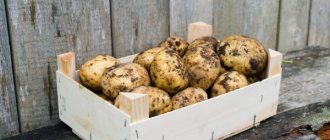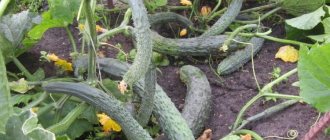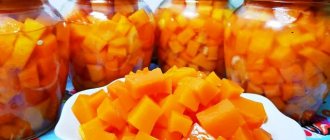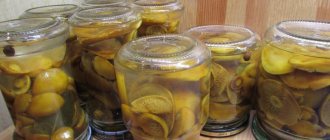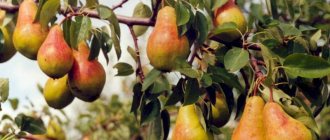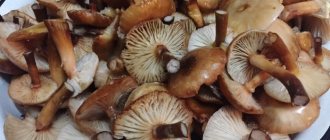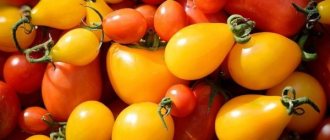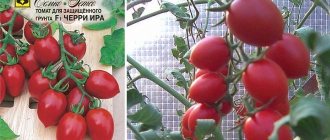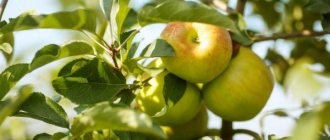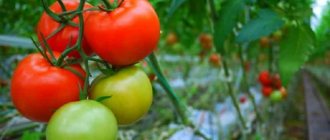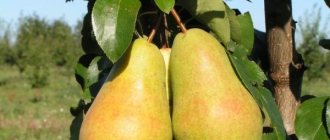Gardening » Pear
0
1602
Article rating
Kira Stoletova
The high-yielding and winter-hardy Baltic oil pear ripens in the summer. With proper care and compliance with the temperature regime, the fruits can be stored without loss of presentation for about two weeks. Characterized by medium growth vigor.
Baltic oily pear variety
Characteristics of the variety
The sweet pear begins to bear fruit 5-6 years after planting, up to 60 kg each year. from a tree. The plant is planted both in autumn and spring. For culture, homestead and garden plots are chosen. Baltic oily pear is actively used in folk medicine - in the fight against bronchitis, as well as in pharmacology in the production of certain medicines. Due to its good sweet taste and marketable appearance, the fruit belongs to the category of market varieties.
Ripening for early varieties of the crop occurs from mid-July to early September, depending on the region of growth.
Description of the tree
Baltic oilseed is a medium-sized tree about 2.5 m. According to the description, it has a strong root system and a fast-growing pyramidal crown. The branches of the tree are straight and constantly raised up. The bark of the plant is gray or gray-green.
The shoots of the early pear variety grow dark brown. The leaves are smooth, short-pointed, and light green in color. When flowering, the petals are oval and do not give any aroma.
Description of fruits
According to the description, the fruits of the oily variety are attractive, weighing up to 250g on average. Has a standard bottle shape. The length of the fruit is about 10 cm, the diameter is 5 cm. They do not fall off when ripe.
The color of the fruit is yellowish-green, with a slight orange color. The culture has smooth, thin skin. They have tender, juicy, white, semi-oily flesh. The Baltic pear has a sweet and sour taste.
Application of fruits
The fruits of the oily pear are consumed both fresh and for cooking:
Features of the Baltic oily pear variety
The pear called “Baltic oily” is one of the varieties in demand among gardeners and summer residents for summer ripening and consumption.
This pear is high-yielding, winter-hardy and disease-resistant. The fruit consumption period is at the end of August. Subject to temperature conditions and optimal humidity levels, the harvested crop will last for about two weeks. In terms of taste, this variety is one of the best in its category.
Characteristics of the variety and its description
Baltic oily pear trees, according to the description given by the originator of the variety, are characterized by medium growth vigor. The fruits are attractive, with an average weight of up to 150–170 g, pear-shaped.
The skin on ripened fruits is yellowish-green in color, with a slight tan of orange color. The pulp of ripened fruits is very tender and juicy, semi-oily. The taste is good. The taste is sour-sweet, very pleasant.
The tree begins to bear fruit five years after planting. The crop can be planted in home gardens and garden plots both in spring and autumn.
Features of planting in spring
The pear called “Baltic oily” is characterized by gardeners as undemanding in terms of soil composition, but it develops best and bears fruit abundantly in areas with well-drained fertile soils.
Planting is done before the plant enters the active growing season. Planting holes for pear seedlings must be prepared in the fall. Depending on the volume of the root system of the fruit plant, the standard dimensions of the pit can be 60 x 60 cm, 70 x 70 cm or 80 x 80 cm with a depth of at least 1-1.2 m. On fertile and light soils, the depth of the pit can be 25% less.
A layer of vegetable or manure humus mixed with coarse sand, superphosphate and potassium sulfate should be placed in the hole prepared for planting pears. A layer of fertile soil is poured on top with the addition of a small amount of wood ash.
Having placed the seedling in the hole, you should carefully straighten the root system of the plant, after which it should be sprinkled with fertile soil and lightly compacted. Do not bury the root collar of the seedling. After planting, the soil is watered and mulched with a layer of humus or peat.
How to grow pears in the middle zone (video)
Features of autumn planting
Only in the southern regions can the Baltic Oily pear variety be planted in the autumn. The most common practice is to plant pear seedlings in autumn not in holes, but on previously prepared soil banks or embankments. However, this method is unprofitable on depleted soils. On such soils, standard planting holes are dug and then filled with a mixture of fertile soil, rotted manure or compost, and high-moor peat. A mound of fertile soil is placed on top.
A pear seedling that is completely ready for planting should be carefully placed on top of an earthen embankment, after which the root system of the plant should be carefully distributed over the soil. The roots should be sprinkled with soil slowly and carefully, gently shaking the plant by the trunk, which minimizes the risk of voids forming between the roots of the pear seedling.
The ground around the seedling should be lightly trampled, and then watered abundantly at the rate of a couple of buckets for each planted fruit plant. If necessary, fertile soil is added around the seedling. In order to properly direct the growth of a young plant and reduce the risk of injury under the influence of gusty winds, the stem part must be tied to a special support peg.
Autumn planting involves protecting young and immature plants from sharply negative temperatures in winter. For this purpose, it is recommended to cover the root system of pear seedlings with organic mulch, a layer of at least 6-8 cm, and also, if necessary, insulate the fruit trees with ordinary spruce branches.
Reviews from gardeners
According to reviews from gardeners, the “Pribaltic Oily” variety does not tolerate severe waterlogging of the soil, as well as stagnation of moisture in the area. The plant is not too tall, which greatly simplifies all necessary care activities and harvesting.
The variety belongs to the market category and is in great demand among consumers due to its good taste and marketable appearance of the fruit. Pears can be used universally.
Pears: beneficial properties (video)
The pear called “Baltic oily” is almost completely devoid of disadvantages and, with the correct growing technology in home gardening conditions, demonstrates not only high, but also very stable yields.
Growing pear
Landing
The plant is undemanding to the soil, but develops better in well-drained, fertile soils. Basic rules for planting the Pribaltiyskaya variety:
- Planting is carried out before the tree enters the active growing season. The optimal planting time is the end of March or mid-November.
- It is necessary to plant the plant in the most illuminated place, dry and level.
- Preparing the pit for seedlings begins in the fall. Standard sizes are chosen for it - 60x60 cm or 80x80 cm.
- The root system must be straightened before planting. Then place it in the hole, cover it with soil, pour in 10 liters of water and tamp it down carefully.
- Carry out appropriate agrotechnical measures - watering, hilling, fertilizing.
It is recommended to plant Baltic oilseed in the southern regions only in autumn. Apple trees are perfect for growing next to other crops. But they don’t place a pear with rowan; they are susceptible to attacks by the same pests.
A two-year-old seedling is selected for planting. The young shoot should have smooth bark, elastic and not dry. The standard height of a seedling is about 80 cm.
Plant care
With proper care, the tree produces a high yield and becomes more resistant to temperature changes. Therefore, a number of agrotechnical measures should be performed.
| Number | Agrotechnical event | Application |
| 1 | Watering | This is carried out from the first days of planting the plant in a permanent place in the garden. After planting, the plant must be watered with 10-20 liters of water. |
In summer, water every 2 days with 1 bucket of water. During the growing period, 5 liters of water once a week.
Pruning is carried out with pruning shears or a garden saw. It is good to lubricate the cuts with garden varnish.
The first years of cultivation are the most important; the tree requires appropriate feeding and abundant watering, taking into account meteorological forecasts.
Fertilizer
In the hole prepared for planting the seedling, it is necessary to add 30 g of manure humus, 400 g of sand and 100 g of potassium chloride.
Treat the tree in the spring with a urea solution. To do this, mix 700 g of the substance and 10 liters of water. This will protect the crop from pests and add the required amount of nitrogen. Spraying with this mixture should be carried out until the buds swell.
For prevention, drugs are used:
The first feeding is carried out in the spring before the start of the sap flow period. The tree is fertilized with saltpeter at the rate of 30 g per 1 m2. The second feeding is applied in May. For this purpose, use a solution of Nitroammophoska in a ratio of 1:200 to 3 buckets of water. Also a good fertilizer can be a mixture of 1 tbsp. l. potassium chloride, 2 tbsp. l. superphosphate and 10 l. water.
Forum statistics
207036 Messages in 1634 Topics from 5593 Users. Last user: Amaya Last message: “Let's talk about the weather in Vash...” ( Today at 07:52:22 ) Latest messages on the forum.
Now on the forum
83 Guests, 13 Users
Users in the last 15 minutes: Lyubov S., Ser, Erem, Polyanina Ekaterina, ElenkaF, kosmos, Yura, Evgeniy52, GALINA ANOKHINA, DorontsovPeter, ZaycevAS, Alex65, 77volt [Blocked] [Section Moderator] [Forum Moderator]
Maximum online today: 96 . All-time maximum online: 2758 (28 July 2021, 17:22:51)
Users who visited the forum in the last 24 hours
Total: 293
(Visible: 292, Hidden: 1) 1963, Lyubov S., Ser, Erem, Polyanina Ekaterina, ElenkaF, kosmos, Evgeniy52, Yura, GALINA ANOKHINA, DorontsovPeter, ZaycevAS, Alex65, 77volt, 64nikolay64, Vova Kapran, Vasily 53, zsb , Polina77, spotlight, Mikhail Alekseevich, Svetla777, Quiet, Marshal, Nikolay S., therapist, Liza, Capricorn, lomakin1969, Alexander Vl., Elvira2017, Andrey76, Slavka, Mikhail77, Tatyana B, Cherkessk, Eugene, Leonidych, vladimirM, yotmast , mers, Serg1707, SNovichek, hanter64, znakomij, Alexander K, Vardan, Sergey Fer, Anatoly Sivkov, Alexey V, Ilya 77, Andrey Gladilin, Tatyana A., Belgorodets, in Astrakhan, Oksana Kopp, sem_en, Vladimir 153, skier, Igor Viktorovich, slavalimon, Primorets, OlgaOs, SANYCH, 31rus, mystic69, Andrey Tsvetkov, Buba, igor222, Elena Z, vlad51, Kenig, Nikolay Rex, Sergey 1965, Vladimir Buturlakin, DSW, psv1960, Dmitry 77, Vasily V., Vyacheslav03 , Natalia Nikolaevna, Sergey Tashchiyan, Igor Sergeevich, alexsandr, kvg, Pioneer, nicson7, Elena Aleshchenko, Alexander-ask-34, Verona, Igor F., Taker, Henry, Yuri72, L.A.P., Gaivoronsky Yuri, Sergeevich Sergey Purekletov, Svetlana Streletskaya, Galinka, Aleksey Deminov, Naumov Igor, Vyacheslav136, Gravoyy, Katrin, Andsanych, Mikhno Alexander, Grandfather, Oleg, Vladimir ++, Lydia58, Alexander Bryansky, Vladimir-Kanevskay, Dil, Amber7394, Marina Protasova , TITOVA LYUBOV, Linx, alexander66, Natalya M, Mikhail Fesenko, Amaya, Alexander71, Boris 1952, tsv, Maximilian, 25nata35, nadia, Igor_K, Alexander Kolesnikov, Ivan Levin, Pitko, weather forecaster, eSAa, cecet71, atseton, Alexander Smirnov, Vladimir Kostochkin, Vladimir Berdnikov, Gocha, pioneer-2, LeXa_KoT, Sergey 61, Sergey Yuryev, alexss, Skif, Vladimir Kovba, dayton, Yuri Semyonov, N.A. Sokolov, Pavlentiy, Sa-shura, Volgogradka, Dmitry Anatolyevich, Grandfather Igor, Andrey Lis, Bublichenko Alexander M, Marina Krymskaya, stenlly2010, irahelm, Vyacheslav Vladimirovich, Vladimir Shilov, Aprel, Dmitry Badaev, gheo55, y_fed, rambo, Yagodka, Valentina Ivanovna, Kryn, oleg9f, DED2, Svetlana Korotina, Oleg Ivanovich Zavezen , Eduard., santra, L2k2m7n, Alexander48, Viknik, Andrey 31, m2d, Valery Rastorguev, Soshnin Yura, Amateur gardener, Galina, Vasily1111, gardener, marlin64, Salex, sergei, Sergey Ko, Ramiz, Victor_, potap05, Yuri 36 , VitalySD, Inna161, Vladimir Shcherbinin, Valerie, niy1, cfibr, Andrey68, kulol3, thanatos, Serzh1978, Realist, Artur53, max2008-01, LOZA, AlexanderD, Ded Molodoy, Natasha, Zayac, ketch, Rita, alx-74, Iv Iv, Alexander150, Igor K, Vasily Viktorovich, VeraNiK, kdm57, Veniaminovich, Boris Sokolyansky, , vikbublik, neposny, Evgen, Victoria Aleksandrovna, Serezha 64, Wintel, Airbone, teri, Sergey Lomonosov, Khramov, Serginio, Leonty Yarygin, Irina O ., Nadezhda Grig, netolya, Saisan, Alexey Agryzkov, Vadi, Zinaida, Vadim, Alexander Taganrog, Sergey Sukhonos, Snezhinets, evgen_26, nau_63, Masha_sadovod, Gennady163, krasnovlad1, Alexander Zinoviev, Roman Fedorovich, TIS, Alexey Sergeevich, Arnyusha, Zheka , Nurtas, kradievska, nick041, Valentina Medvedeva, Sergey43, Andrey S., Nikolay Lipunov, Mst, Vertuoz2, Vladimir VS, NatalyaMed, freesia, Kinna, Mikhail Michurinsk, alekcsan1, VALERY TAMB, Sasha57, MikhAf, Y_Azer, Andrey Beribesov, hunter1955 , nut lover, Keys, Ivan Shmelev, Pestle, anton_slash, Nadymchanka, Sergey 31, Volgar, Pavel 64, Tatyana Volzh, Elektronik_t, Alexander 61
Diseases
The main diseases that affect the culture:
- Black cancer. Appears on bark, leaves and branches in the form of damage and red color.
- Fruit rot. The fruits become brown.
- Scab. Symptoms are small spots on dark-colored leaves.
- Mosaic disease. Appears as yellow and light green spots.
To combat diseases, it is necessary to remove or trim diseased branches, leaves, and fruits. Treat the tree with a solution of copper sulfate at a rate of 50-100 g of the substance per 10 liters of water.
Pests
The fruit-bearing crop also suffers from pests:
- Leaf roller. To combat, use a decoction of chamomile or dandelion.
- Ticks. To get rid of them, acaricides are used.
- Codling moth. Spraying with Agravertine is used for it.
- Green apple aphid. A soap solution or mustard infusion is used against it.
To combat insects and diseases, gardeners also recommend fungicides: Horus, Bordeaux mixture and Abiga-Peak. Or a solution containing 50 g of soda ash, 10 g of liquid soap and 10 liters of water.
Summer varieties of pears are distinguished by excellent yield indicators, they are not demanding in care and begin to bear fruit early. Taking into account all such advantages, they have gained popularity among gardeners and are found in most garden plots. Let us tell you in more detail about the varieties of such summer varieties.
summer pears
The currently popular summer pear varieties have a pleasant taste and abundant fruiting. Harvest ripening for such summer varieties is observed in early August and can continue until early September.
At the same time, the gardener needs to take into account the mediocre shelf life, which forces the harvested crop to be quickly processed, eliminating the possibility of long-term storage of the grown fruit. Let's talk in more detail about the common summer varieties of pears.
Bashkir summer
This variety can be classified as early ripening, which allows you to get the harvest as early as possible. The Bashkir summer pear has been zoned for cultivation in the Volga region.
The trees are medium-sized with a characteristic pyramidal shape. Medium-sized fruits with regular round shape. The skin of the fruit is oily, smooth with numerous small and greenish subcutaneous dots. But during the period of removable maturity they can get a greenish-yellow tint. Harvest usually occurs at the end of July and beginning of August.
It should be noted that Bashkir fruiting begins approximately in the sixth year after planting. Ripe fruits have a wonderful sweet taste, but they can be stored for no more than 15 days. This versatile variety can be used for fresh consumption or for subsequent processing.
Among the advantages, we note excellent frost resistance, low maintenance, resistance to scab and excellent productivity. Disadvantages include the late onset of fruiting and the small size of the grown fruits.
Winter
These pears are harvested in late autumn or early winter. Despite the late ripening, many varieties are distinguished by their rich taste and wonderful aroma.
Helpful information! How to pin pear to pear
Belarusian late
An unpretentious variety suitable for growing in harsh regions. Even poor soil and lack of moisture are no obstacle to the ripening of juice-rich fruits with an amazing sweet and sour taste. The pulp is fleshy, thanks to which the fruits are preserved for a long time if the temperature is maintained.
Related article:
Proper planting of pears on the site
Maria
A late variety of pear with a compact crown and powerful, developed shoots. Seedlings begin to bear fruit 4 years after rooting in a permanent place. They produce round, large fruits weighing up to 300 g, covered with a lumpy yellow skin with a pinkish blush. Inside they are juicy, sweetish, and oily.
Olivier de Serres
A capricious, demanding variety that only experienced gardeners can grow. For fruit ripening, it is important to create comfortable conditions. To do this, they resort to regular watering, fertilizing, pruning and treatment against pests and diseases.
The fruits are small, almost round in shape, ripen in clusters at the end of the branches. The skin color is greenish with a slight tan. The inside is juicy, soft, with a rich aroma.
November
A medium-sized tree with a pyramidal crown, guaranteeing a bountiful harvest. The plant is suitable for the southern regions of the Moscow region and tolerates frost well. Diseases almost never affect this variety, but it needs regular feeding with mineral fertilizers.
Related article:
Fruitful varieties of columnar pears
The fruit is a classic pear-shaped fruit with yellow skin. They are quite large, weighing up to 200 g. The inside is oily, with a high content of juice, and a honey-fruit taste.
Miraculous
One of the sweetest pear varieties, common in the Urals and Siberia. He is not afraid of severe frosts, diseases, or insect pests. The plant blooms in March, the fruits ripen closer to November and are well preserved until winter.
The fruits are ovoid, with a pointed end, greenish skin and reddish sides. Smooth on top, with light veins. The inside is creamy in color, dense, juicy, with a sweet and sour taste, devoid of astringency.
Summer Oryol pear
Oryol summer pear
An early-ripening variety popular among gardeners, which is zoned for cultivation in the black earth and central regions. Due to its excellent frost resistance, this variety is often found in the gardens of farmers and summer residents. The Oryol summer pear has a large, medium-density, wide-pyramidal crown.
The fruits have an elongated pear-shaped shape with an average weight of 200 grams. The maximum fruit size is 270 grams. This is one of the largest-fruited varieties grown in central Russia. During the period of removable ripeness, the fruits acquire a light yellow color with a barely noticeable orange blush.
Small, few subcutaneous dots may also be noticeable. The white pulp is extremely tender, fine-grained, juicy, semi-buttery. Harvesting maturity occurs in the second ten days of July and in the Moscow region in early August.
The advantages include excellent productivity, early fruiting, and excellent taste of the grown crop. This variety is frost-resistant and scab-resistant. If we talk about the disadvantages, we can note the large size of the trees, as well as mediocre keeping quality, which is typical for most summer varieties of pears.
Variety Big summer
variety Big Summer
The Great Summer Pear is an early-ripening hybrid that was obtained in the middle of the last century. Due to its excellent yield, it is popular among gardeners. Trees of the Bolshaya Summer variety are vigorous and have a pyramidal crown.
The variety has been zoned for cultivation in the central zone of Russia and in the southern regions. The pear has good winter hardiness and resistance to scab. The fruits have a characteristic pear shape and weigh about 130 grams. It is necessary to note the excellent taste and good keeping quality of the harvested crop for a summer variety.
Among the advantages, we can note the excellent yield, resistance to scab and the wide zoning of this variety, which allows it to be grown in almost the entire European part of Russia. Among the shortcomings, we note only the vigorous growth of the tree, which somewhat limits gardeners when planning the location of fruit trees on the site.
Autumn
Unlike early ones, autumn pears are harvested closer to the first half of autumn. This is the best time as the summer heat subsides and they are better preserved and transported. Experienced gardeners know exactly which autumn pear varieties are the sweetest. Every gardening enthusiast has their favorites, but there are also universally popular varieties that everyone will enjoy.
Interesting! The best varieties of pears for the garden
Bryansk beauty
A winter-hardy variety that people like to grow in central Russia. The color of the fruit's skin is yellow, with a brown or purple tint. The pulp has a pronounced floral aroma. The harvest is harvested in September. If you place the fruits in the refrigerator, they can be stored for up to 2 months.
Related article:
Fruitful varieties of columnar pears
The tree is medium-sized, with a spreading crown. The plant is unpretentious and is rarely affected by pests and diseases. It tolerates even severe frosts well.
Conference
The variety was popular back in the 19th century in Europe and southern Russia. At the end of September, large teardrop-shaped fruits weighing up to 150 g are collected from the tree. They have a harsh green skin, covered with red spots on the sunny side.
The pulp is juicy, sweet, slightly tart. Its shade varies from cream to pinkish. The trees are unpretentious, but they like to grow in warm regions, so they are not suitable for planting in the northern regions.
Beauty Chernenko
An autumn variety, harvested in the first half of September. The crown of the tree is cone-shaped, with powerful straight shoots. The plant is resistant to diseases and insect attacks.
Related article:
How to pin pear to pear
The fruits are large, some specimens weigh about 400 g. They are covered with light green skin with a faint blush and a waxy coating. The pulp is sweet, grainy, slightly oily. If the optimum temperature and humidity are maintained, the fruits can be stored for up to 2 months.
Muscovite
A medium-sized plant suitable for growing in any region. But its fruits, unlike those described above, do not have a beautiful appearance. They appear to be covered with a layer of rust. This is not a disease, but a feature of this variety.
But the aroma and taste quality of this plant variety are excellent. Another advantage is the fact that the harvest appears within 2-3 years.
Autumn Yakovleva
A tall tree with heavy fruits covered with yellow skin with dark spots that look like a tan. The plant loves fertile soil, is very whimsical and often gets sick. It is not recommended to be planted by inexperienced gardeners.
Related article:
Proper planting of pears on the site
But knowledgeable agronomists collect up to 160 kg of fruit from a tree per season. Regular spraying and fertilizing increase the immunity of plants, and they reward their efforts with a bountiful harvest.
Talgar beauty
Scientists obtained this variety of candy pear by free pollination of the Forest Beauty. The variety, bred by Kazakh breeders, quickly spread in central Russia and became popular.
Until the end of September, large fruits of a light yellow hue with reddish sides can be collected on the tree. Their weight reaches 160 g. The inside is juicy, dense, and is well preserved for 1.5 months. The peculiarity of this variety is its immunity to scab (a disease that often affects pear orchards).
Mlievskaya early
pear variety Mlievskaya early
An early ripening variety, which was obtained by crossing the Gliva Ukrainian and Esperen varieties. Early Mlievskaya trees have a height of no more than 5 meters and a wide pyramidal shape. The trees are characterized by active growth rates and begin to bear fruit already in the 4th year after planting.
The grown fruits are of medium size (weight about 100 grams). They have a characteristic pear-shaped shape and a light green color with numerous dots. When ripe, a slight blush appears.
The pulp is juicy, creamy, sweet and sour with a slight aftertaste. Usually the early Mlievskaya pear ripens in early August. The shelf life of Mlievskaya early is about 2 months.
The pear is winter-hardy, so it is zoned for the Central region.
Let us note that the Sweet pear variety from Mliev has also become widespread among gardeners. These are two different varieties that differ in ripening time and the taste of the grown crop.
Among the advantages of early Mlievskaya we can note excellent yield indicators, winter hardiness, early ripening and resistance to bacterial cancer and scab.
Early Moscow pear
early Moscow pear
This variety was bred in the 90s of the last century and quickly gained popularity among gardeners. Photos and descriptions of this variety can be easily found on the Internet. This variety is zoned for the Central and Northwestern regions.
Fruiting in the Moscow region usually begins in 6-7 years, and the gardener can immediately get an excellent harvest. Trees of medium height with a height of no more than 5 meters. The crown is pyramid-shaped and medium thick. The fruits are of medium size with a weight of about 140 grams.
The peculiarity of this variety is its magnificent juicy and melt-in-the-mouth taste with a delicate aroma. Ripe fruits have a greenish-yellow color and a pronounced blush on one side. The pulp is cream-colored with a delicate taste. Harvesting usually begins in early August, and shelf life is no more than a month. These early pear varieties show excellent yield.
Among the disadvantages of Moscow early we can note late fruiting, the first harvest is only 6-7 years after planting. Among the advantages we can highlight the excellent taste of the grown crop, good shelf life, excellent resistance to diseases and low temperatures.
Variety July early
Variety July early
This early-ripening variety is zoned for cultivation in the southern regions. Early July is characterized by excellent yields, early ripening and resistance to various diseases. The trees of July early are medium-sized with a dense, wide-oval crown. The weight of bottle-shaped fruits, provided the plantings are provided with appropriate care, is 120 grams.
When pears reach ripeness, they acquire a characteristic yellow color. Subcutaneous points are barely noticeable and small. The taste of the pulp is extremely juicy, sweet and sour with a slight aftertaste.
When grown in the south, harvest maturity occurs in mid-July. Keeping quality indicators do not exceed 10 days. The fruits do not fall off when ripe, and the harvested crop has excellent transportability.
Among the advantages of July early, one can note excellent regular yield, early ripening, good taste of the grown crop, winter and drought resistance. If we talk about shortcomings, we can only note the small size of the fruit.
What varieties of pear are the most delicious?
Every gardener has his own favorite pear variety. Some people prefer sweet and aromatic fruits, while others like sweet and sour fruits that are balanced in taste. It is difficult to taste all varieties of pear, so many rely on the opinions of other summer residents. Let's consider the rating and description of the most delicious varieties.
Dessert
The name of the variety speaks for itself - the fruits are distinguished by a sweet-spicy taste, delicate pulp, and harmonious sourness. The crown is sparse, the shoots are medium-sized. The weight of the fruit is up to 220 g, the shape is pear-shaped, flattened , the surface is smooth and pleasant to the touch.
The color of the pear is golden-greenish with a red blurred blush. The pulp is oily, fine-grained, light beige in color. The taste of Dessert pear is rated 5 points out of 5. The fruits are universal in use ; Dessert pear is grown for personal consumption and for sale.
Early
Winter-hardy variety of early ripening. The tree is medium-layered, the crown is pyramidal. The shape of the fruit is conical, tapering towards the tip. The weight of a pear is from 70 g to 150 g, depending on the growing region and climatic conditions. The peel is smooth, medium density.
Early's color is yellow-green, there is no blush or dots. The peduncle is long and curved. The pear pulp is oily, tender, the taste is sweet and aromatic. The variety is resistant to viral diseases, however, to increase productivity, it is recommended to carry out preventive measures. The fruits are eaten fresh, processed into dried fruits or used to make jam and compote.
Tyutchevskaya
The early autumn variety is grown in the Central region. The tree is tall with an oval and dense crown. The weight of the fruit is 140 g, the shape is oblong, and looks like a bell . The surface is ribbed, the peel is thick, the color is yellow-green with a red blush. The pulp is greenish-green, tender, fine-grained. The taste is juicy and sweet, the aroma is fragrant with notes of spice.
Attention! For storage, pears are harvested unripe - 5-10 days before ripeness. Dry weather is chosen for harvesting. The storage area should be dark, dry and cool. For example, it could be a basement or cellar, a balcony or a refrigerator. Ideal temperature is from +1°C to +4°C.
The advantages of Tyutchevskaya are winter hardiness, versatility, and disease resistance . The harvest is harvested in mid-September. Thanks to their thick peel, pears can be stored for up to two months.
Moldavian early
early Moldavian variety
This is a hybrid variety obtained by crossing the Williams and Lyubimitsa Klappa varieties. This variety is characterized by medium-sized fruits, the weight of which can reach 150 grams. The trees are medium-sized with a pyramidal crown.
It should be noted that they have excellent winter hardiness indicators, which makes it possible to grow such varieties not only in the southern regions, but also in the middle zone and the Moscow region. Moldavian early is resistant to scab and other diseases. The fruits have a characteristic yellow-green color with sweet and sour pulp with a slight aroma. The harvest ripens in the first ten days of August.
Let us note the shelf life of the grown crop, which is about one month.
Among the advantages of the Moldavian Early pear variety, we can note their excellent yield, resistance to frost and ease of care. This variety can be recommended to all beginning gardeners without exception.
Early
These pears can be harvested as early as late July - mid-August. If you linger, they begin to overripe and rot. The shelf life reaches 2 weeks, so they try to use them immediately for preparations.
August dew
A fruitful juicy pear, hardy and unpretentious. It is resistant to diseases and pests and tolerates severe frosts well. Very sweet, has a pleasant sourness and rich aroma.
Related article:
Winter-hardy pear varieties
The weight of one specimen is about 100-120 g. The fruits are green at first, but as they ripen they acquire a yellow tint. If the pears are in a sunny area, they will develop a slight pink blush. The pulp is white, tender, juicy. The fruits are stored after collection for 2 weeks.
Chizhovskaya
A low-growing variety of pear tree that produces teardrop-shaped fruits. This variety of plant is very whimsical, sensitive to temperature changes, frost and heat.
Its difference is that it does not tolerate high humidity. A fungus develops on the tree, the fruits crack and lose their “marketable” appearance.
Cathedral
Aromatic fruits with a thick, buttery rind and a slightly sour taste. The pulp is grainy and juicy. The weight of one specimen is about 120-130 g. Pears are teardrop-shaped with tubercles, which make them appear deformed.
Related article:
Pruning a pear in the fall: 7 useful tips to help ensure a good harvest
The trees grow well in any climate and tolerate frost and heat. The fruits ripen towards the second half of August. Once collected, they last for about 2 weeks.
Lada
A variety with small but sweet pears, the weight of each of which reaches 100 g. Fruits with a bright yellow peel, which in the sun can acquire a pinkish tint.
This plant is loved by gardeners from the northern regions. It tolerates frost and drought well, is unpretentious, and is rarely attacked by pests and diseases. The tree bears fruit abundantly, but the fruit does not last long.
Marble
A variety of green pears whose skin turns yellowish when ripe. A distinctive feature is the dark dots on the skin. The fruits are large, each weighing about 150-180 g. The pulp is grainy, juicy, with surprisingly tasty juice.
Related article:
Pear Skorospelka from Michurinsk
The tree is tall, reaches a height of 10 m. The harvest is plentiful: it is also distinguished by its long shelf life compared to other early varieties - up to 70 days. Suitable for sales and transportation.
Early
A winter-hardy variety with a yellow-green skin color without blush or dark spots. The pulp is oily, sweet, with a rich taste and aroma. The weight of the fruit reaches 70-150 g depending on the region of growth.
The tree is low, with a pyramidal crown. It is not susceptible to viral and fungal diseases, but experienced gardeners still recommend carrying out preventive maintenance 1-2 times a year to increase productivity.
Tyutchevskaya
An early-ripening soft variety of pears, shaped like a bell. They have ribbed, thick skin of a yellow-greenish hue, on which a slight blush appears when ripe. The weight of the fruit reaches 150 g. The pulp is juicy, tender, fine-grained, with a rich aroma.
Related article:
How to deal with scab on apple and pear trees
The tree grows compact, with a dense crown. Its fruits are harvested several days before signs of ripeness appear. Store them in a dark, cool place with a temperature of 1-4 degrees.
Great summer pear variety
Great Summer pear variety
A productive variety that is distinguished by excellent resistance to scab and is zoned for cultivation in central Russia. Velikaya Summer trees are medium-sized with a wide spreading crown. The ripening of the crop is observed in early August.
The fruits are large (weighing 180 grams). When they reach removable maturity, the fruits acquire a characteristic light yellow color. The pulp is semi-oily, juicy with a sweet and sour pleasant taste. Fruiting begins at 4 years and subsequently the yield only increases.
Among the advantages of Velikaya we can note its resistance to scab, winter hardiness, excellent taste and productivity. If we talk about the disadvantages, we can note that this variety is demanding for proper care, therefore, only with the application of appropriate fertilizers will the Summer pear allow you to get a good harvest.
The sweetest and juiciest pear varieties
Juicy and sweet pears are every gardener's dream. Such fruits are distinguished by a honey aroma, delicate pulp and a pleasant aftertaste . The fruits are good in any form - fresh or after heat treatment. Pears make delicious jam, sweet juices and compotes.
We bring to your attention an overview of the sweetest and juiciest varieties .
Williams
The tree is tall with a pyramidal crown. The average weight of the fruit is 170 g, the surface is lumpy, the shape is pear-shaped and oblong . The skin is glossy, light green in color, later acquiring a yellowish color with dark dots. The pulp is white, cream-colored. The taste is sweet with a nutmeg aftertaste.
The Williams variety is valued for its transportability and keeping quality ; in a cool room, the harvest can be stored for up to 1.5 months. Pears ripen in late or mid-August.
Williams pear
Duchess summer
The tree is of medium height, the crown is dense and wide. Duchess blooms late and tolerates changes in weather conditions. The weight of a pear is up to 180 g, some reach 250 g. The skin is thin, green at the beginning of ripening, later it becomes rich yellow with small brown spots. The pulp is creamy, oily, the taste is sweet, the aroma is bright fruity.
The dessert variety Duchess is valued for its taste, tender pulp, and resistance to viral diseases . Pears can withstand transportation and are stored in a cool place for up to 45 days.
Pear "Summer Duchess"
Forest beauty
A tree with a wide pyramidal crown, powerful branches . The first harvest is harvested 3-4 years after planting. The fruits are ovoid, flattened, golden-yellow in color. Small dots and blush are visible on the surface. The pulp is light yellow, honey-like with a pleasant aroma. The stalk of the Forest Beauty is short. Harvested in August, shelf life is no more than three weeks. The variety is suitable for growing in the middle zone and the Urals.
Attention! The fruits of the Forest Beauty quickly overripe - they become soft, lose their taste and marketability, and fall off the tree. Therefore, summer residents harvest the crop a week before full ripening.
Advantages include winter hardiness, drought resistance and self-fertility . Pear grows well in moderately moist to dry soils.
Pear "Forest Beauty"
Prominent
Summer variety of pears for growing in central Russia. The tree is of medium height, the crown is dense, with wide dark green leaves. The shape of the fruit is elongated pear-shaped, weight is about 120 g . The surface is tuberous, the stalk is short. The pulp is snow-white and sweet, and there is an abundance of juice.
Vidnaya is stored for no more than a month after harvest . Resistance to fungal and viral diseases is average, rarely affected by insects and rodents. Good in fresh and processed form, suitable for baking and desserts.
Pear "Vidnaya"
Banana
Summer variety with a drooping crown and rounded shoots. The shape of the fruit is pear-shaped, the surface is rough, weight is about 80 g . The color is green-yellow with a pinkish blush on the side. The flesh is creamy, the taste is sweet and delicate, balanced. Fruity pear aroma, pleasant.
Banana pear is winter-hardy, suitable for growing in the middle zone . The peel is dense, the harvest is stored for up to 30 days.
Pear "Banana"
Oily summer
oily summer pear variety
Pear An oily summer folk selection, it is very popular among gardeners due to its productivity. Its characteristics allow it to be classified as high-yielding. Oily summer trees are vigorous with a crown of medium density. Such a pear begins to bear fruit 5-6 years after planting.
Oily summer fruits are large in size with a characteristic pear-shaped shape. The skin is greenish-yellow with numerous small black dots. The pulp is juicy, oily and fine-grained. Consumer maturity usually occurs at the end of August. The shelf life of the harvested crop usually does not exceed 2 weeks.
The advantages of Oily Summer are excellent yield, resistance to low temperatures, and not susceptibility to scab and other fungal diseases. Among the shortcomings, we highlight the mediocre keeping quality indicators.
Reviews
- Maria, 32 years old: “I really love eating sweet pears, so I planted two varieties at my dacha – Chizhovskaya and Severyanka. I can’t say that they require care, as they grow and bear fruit well even on sandy soil. True, she chose a sunny place for them. I water it once a month, as I have laid a mulching layer of peat. Thanks to it, moisture lingers longer on the surface. I also add fertilizers in the form of humus, superphosphate and ammonium nitrate.”
- Arkady, 52 years old: “I planted the Rogneda variety on my plot. It has very juicy and sweet fruits. The jam they make is incredibly tasty. Pears grow in sunny places and fertile soil. Its yield is high, since I can collect up to 50 kg of fruit from one tree.”
Sweet pears are not just an excellent dessert, but also a storehouse of vitamins. Growing them in your own garden is quite easy if you choose the right variety. To do this, it is necessary to take into account the characteristics of the climate, soil, as well as the quality and taste of the fruit. You can read information about the characteristics of the Lada pear variety in this material.
Rating of the best pear varieties
| 2 | Mulching | Choose organic mulch: peat, humus, in a layer of 8-9 cm. Insulate the seedling with spruce branches. |
| 3 | Trimming | The plant requires regular pruning so as not to grow tall, but to produce a large number of fruits. The procedure is performed if the temperature is above -8°C. First, the crown of the tree is thinned out, then the trunk is cut by a quarter. |
| Category | Place | Name | Rating | Price |
| The best early varieties of pears | 1 | August dew | 9.9 / 10 | 730 |
| 2 | Chizhovskaya | 9.8 / 10 | 480 | |
| 3 | Marble | 9.8 / 10 | 480 | |
| 4 | Lada | 9.7 / 10 | 730 | |
| 5 | Cathedral | 9.6 / 10 | 730 | |
| 6 | Prominent | 9.6 / 10 | 730 | |
| The best late varieties of pears | 1 | In memory of Yakovlev | 9.8 / 10 | 480 |
| 2 | Beauty Chernenko | 9.7 / 10 | 730 | |
| 3 | Simply Maria | 9.7 / 10 | 730 | |
| 4 | Bryansk beauty | 9.7 / 10 | 730 |
